Plants and Shrubs to Attract Birds
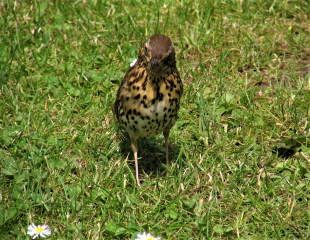
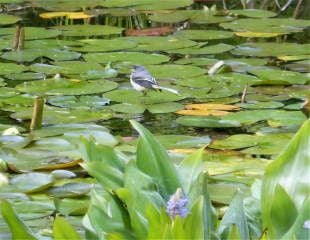
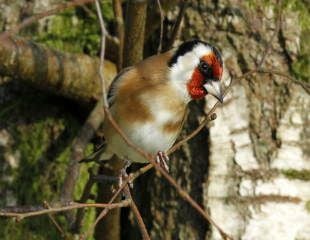
What to plant to attract birds into the Garden
Birds are looking for shelter, nesting places, cover, food which is often berries and insects, a water source and a good place to raise their young.
The key to encouraging more birds into your garden is not just bird feeders, although they clearly have a role to play, it's the whole garden habitat.
No one plant or shrub can provide for all the birds' needs. Diversity will create the ideal environment. Shrubs are essential to provide cover, nesting and food. Flowering plants and wild areas draw in insects and pollinators, which are food for birds. Most important is a water source. Without doubt, a pond is a magnet for wildlife, including birds. If you don't have much garden space, a simple bird bath will do the trick.
Bird baths are not simply garden ornaments. For months, I rented a property which only had a small patio garden. At first there were very few birds in the garden but the addition of feeders, but importantly a bird bath, made a huge different. Lots of birds constantly visited the bird bath to drink and bath.
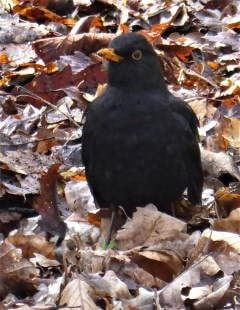
Leaving areas untidy allows birds room to forage and we know blackbirds love leaf litter and, by extension, bark chippings. Instead of hard landscaping paths, consider bark chippings to make paths wildlife friendly.
We know birds like shrubs with berries to provide autumn and winter food, but they also like insects. This means that shrubs which attract insects of all types are bird friendly.
Shrubs and trees are birds' natural habitat. The more shrubs and trees in the garden, the better the bird habitat.
Green Cladding for more wildlife
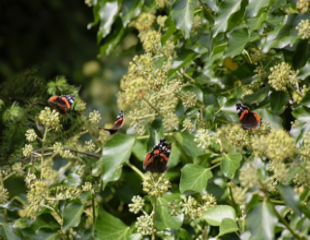
From the wildlife perspective, hedges are better than fences. But sometimes fences are necessary and their wildlife score can be improved by using what is often called "Green Cladding". This is simply planting climbing plants and suitable shrubs trained to cover the wall.
An excellent form of green cladding is Hedera Helix, the English Ivy. It is a wildlife magnet, especially as it matures and produces flowers and berries..
This form of ivy becomes dense enough to provide shelter to birds and for nest. It is home to dozens of invertebrates and pollinators. It is one of the most wildlife friendly of all climbing plants. More information and growing tips about English Ivy.
Plants, shrubs and trees attractive to birds
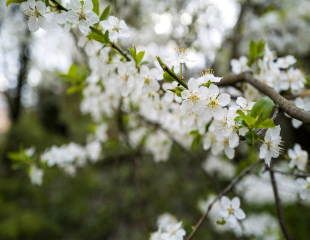
Native Hawthorn
Our native Hawthorn is a deciduous, flowering large shrub or tree commonly used for hedging. It supports an extensive number of insects providing food for blackbirds, thrushes, greenfinches and more. Its dense branches and leaves provide roosting for wrens, robin, blackbirds, song thrush and hibernation for small mammals. It's size can be controlled by pruning and it makes an ideal hedge or part of a shrub collection.
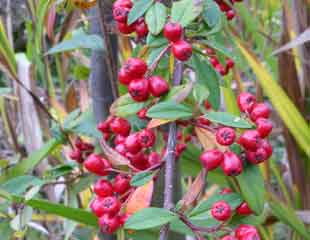
Cotoneaster
Birds love the berries, and the bees the flowers. Cotoneasters are a wide range of shrubs and trees. Smaller varieties which are more garden friendly include C. amoenus, an evergreen variety around 2.5m; C.× suecicus 'Coral Beauty' low growing 2.m; C. franchetii semi evergreen 3-4m or if space is very limited, C. horizontalis, which as the name suggests is a low growing deciduous variety. Blackbirds, thrushes and waxwings will consume the berries.
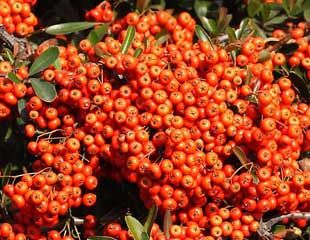
Pyracantha
Pyracantha is also big on berries which are bright red or orange in the Autumn. Pyracantha is an evergreen shrub which has scented white flowers in the spring followed by a profusion of berries.
Many birds are attracted by the berries, especially sparrows and finches.
Most shrubs and trees which produce berries will be attractive to birds. In addition to the suggestions above, also bird friendly are Rosa Rugosa which has large hips in late summer and autumn, which birds enjoy. Holly with its red berries is another bird favourite. You need to right a combination of shrubs to get holly berries, check out growing tips. Also bird friendly are rowan, whitebeam, guelder rose, elder, and ivy.
A Wild patch for Birds
A wild area is always popular with the birds. It need not take over the garden, just a corner where nature is left to its own devices. Ideal to have in this area is longer grass, log piles as rotting wood accommodates insects, and some bird friendly weeds and wild flowers. Although this is a wild area, it is good to have a gardening hand in to make to it bird friendly.
If you are thinking of wilding your garden, check out how to create a wild garden.
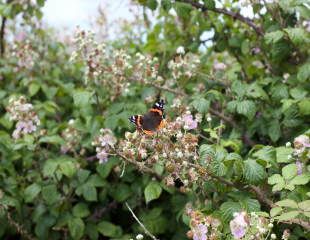
Grow Brambles
Brambles are regarded as a weed, but just a few in a wild area are great for wildlife. They provide nectar enjoyed by an array of pollinators and insects.
The fruits are eaten by blackbirds, thrushes, starling, chaffinches and small mammals. The shrub also provides nesting for robins, wrens, thrushes, blackbirds and finches, so all round good to grow, just a few.

Teasel
Teasels are a self seeding biennial which has soft purple flowers in late summer, attractive to bees.
After flowering, the seed heads stay in place for weeks and are irresistible to goldfinches who feed on the seeds.
Teasel is easy to grow from seed and vigorous. Once established, they will self seed around the garden each year.
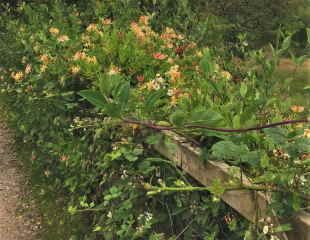
Honeysuckle growing semi wild
We know lonicera as honeysuckle, but its other common name is woodbine. It grows well in a semi wild woodland type setting in soil which is moist but well drained.
The wonderfully scented flowers attract a range of insects, which birds will feed on. Later in the autumn, when the berries appear, so too will bullfinches, warbles and thrushes.
A word about water
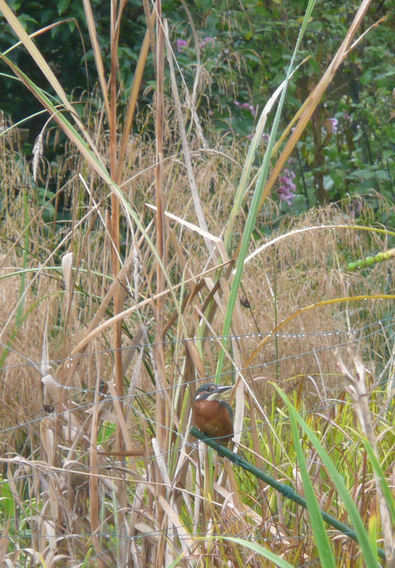
If you can manage a pond in your garden, the birds will love it. Blackbirds and garden birds will bath in it, fluffing up their feathers for a good wash.
I took the image top centre of a Wagtail tit on a lily in my garden pond. A common visitor, bobbing across the lily pads looking for insects, of which there are always plenty in a pond.
An uncommon visitor is in the image left, which is not the best quality but a magical moment. Rarely is a Kingfisher seen in a garden setting and I just grabbed the camera. On two separate occasions, the Kingfisher arrived and flashed his beautiful blue for just a few seconds.
More commonly found around ponds are a host of wildlife including: many birds to bathe and drink, damselflies and dragonflies in abundance, frogs and toads, mammals for drinking such as foxes and badgers, Invertebrates such as pond skaters, water boatman and water beetles, which in turn attract more birds to feed on the insects.
